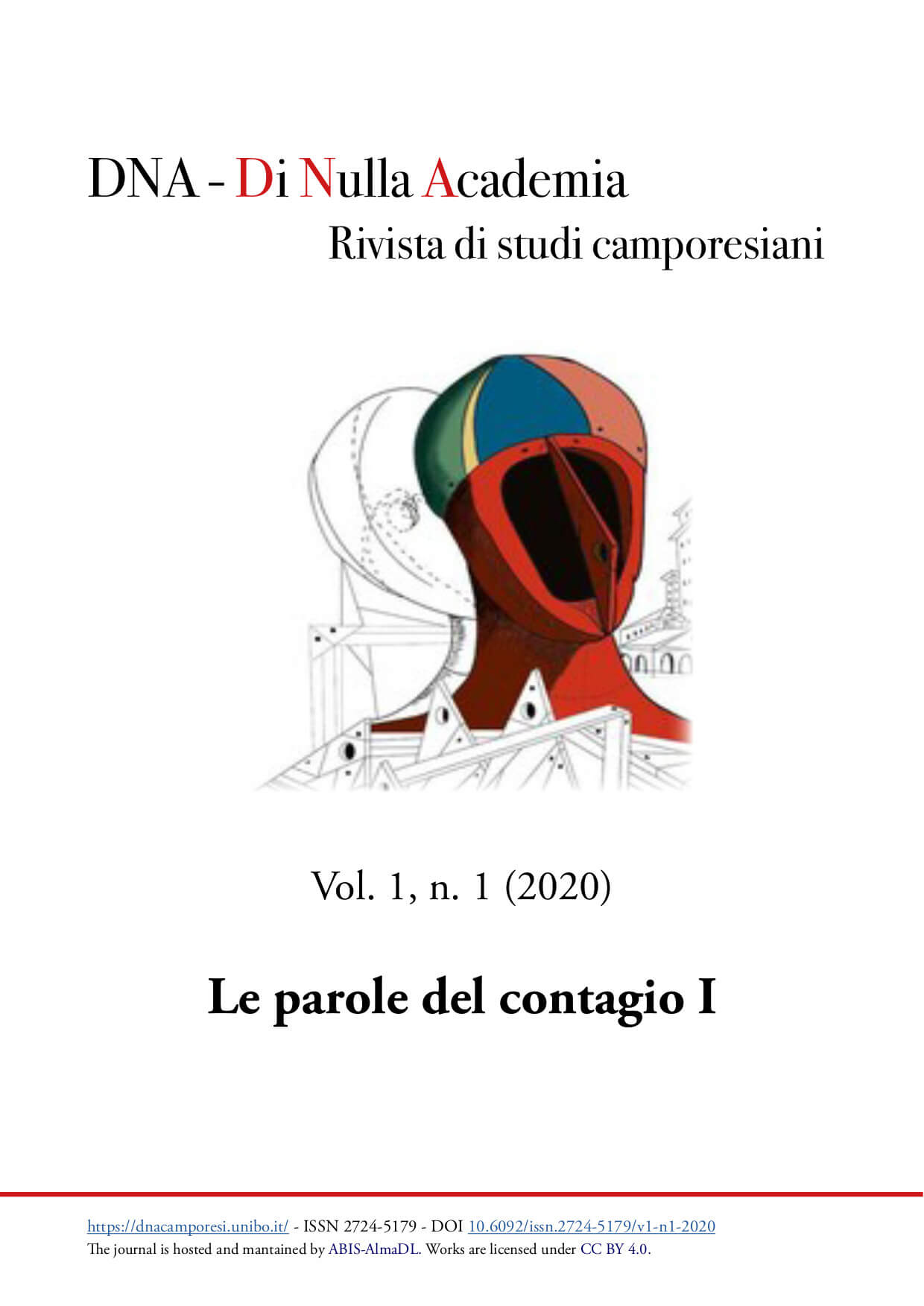«Contagiosa fortuna»: il contagio della colpa, dai classici ai moderni
DOI:
https://doi.org/10.6092/issn.2724-5179/12087Keywords:
Italian literature, Baroque, tragedy, religion, anthropology, law, fault, archetype, contaminationAbstract
Taking the cue from the COVID-19 emergency, this essay focuses on the theme of infective faults, widespread at anthropological as well as literary, especially dramaturgical, levels, in both ancient and early modern times, in particular, as far as this study in concerned, in the 17th century, taking into account two champions of Baroque literature in Veneto: Carlo de’ Dottori from Padua (1618–1686) and Guido Casoni from Serravalle (1561–1642). First of all, this study will need to cover basic historical-cultural notions (on the magical-religious, legal sides, etc.), helpful to shed light on the deep archetypal meaning of such a theme, commonly found in the classical models, then paying special attention to the two aforementioned authors, belonging to two different generations from the mid- and early Baroque century, yet both witnessing the plague epidemic.
Downloads
Published
How to Cite
Issue
Section
License
Copyright (c) 2020 Alessandra Munari

This work is licensed under a Creative Commons Attribution 4.0 International License.





